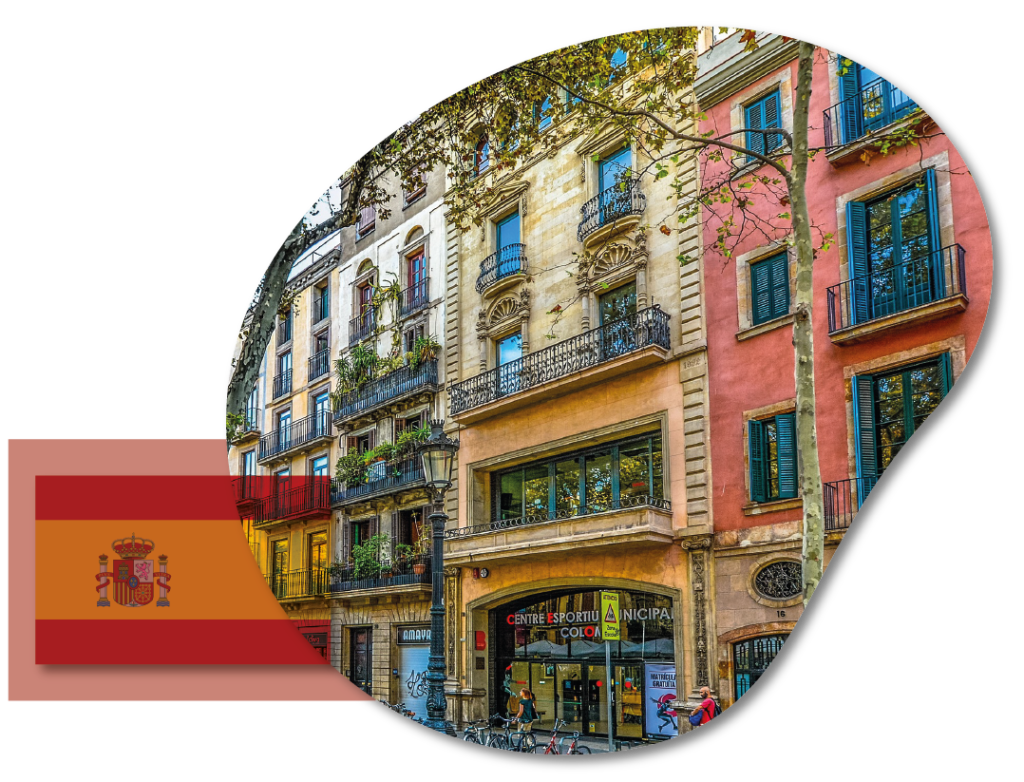
CITY BREAK BARCELONA > ALL YOU NEED TO KNOW
Barcelona is the capital and largest city of Catalonia and is known for its rich culture, architecture, and history. It is particularly famous for the works of the architect Antoni Gaudí, such as the Sagrada Familia and Park Güell, which are UNESCO World Heritage Sites. It has a vibrant food scene and a lively nightlife and it’s also a popular beach destination.
City Break To The City of Gaudi: Barcelona
Barcelona is located on the north-eastern coast of the Iberian Peninsula and has a population of over 5 million people. The city is known for its rich history, culture, and architecture, as well as its lively atmosphere and delicious food. Barcelona is famous for its architecture, particularly the works of Antoni Gaudí, who is one of the most important architects of the 20th century. Some of his most famous works include the Sagrada Familia, Park Güell, and Casa Batlló.
The city has a vibrant art and culture scene. The Picasso Museum and Joan Miró Foundation both house extensive collections of works by their namesakes. The Joan Miró Foundation contains a diverse collection of painting, sculptures, prints, and drawings.
Barcelona is also known for its beaches and its Mediterranean climate, which makes it a popular tourist destination. The beach promenade “La Barceloneta” is a great spot to enjoy the sun, sea and the local cuisine. The city is home to the famous Ramblas, a lively pedestrian street with street performers, street vendors and cafes, which is a must-see for visitors to the city.
The food in Barcelona is definitely something not to be missed, with a mix of traditional Catalan dishes such as paella and tapas as well as a wide variety of international cuisine. The food market of La Boqueria is a great place to try some local specialties and have a taste of the Mediterranean cuisine.
City Break Barcelona: Vibrant neighbourhoods
Ciutat Vella
Ciutat Vella, or the Old City, is steeped in history and culture. This vibrant and colourful area is a must-visit for anyone looking to experience the true essence of the city. Explore the winding streets and admire the stunning architecture, including the Gothic Quarter, with its narrow alleys and historic buildings, and the charming El Raval neighborhood, with its bohemian atmosphere and street art. For a touch of history, visit the Basilica of Santa Maria del Mar, a 14th-century Gothic church, or the Palau de la Música Catalana, a beautiful modernist concert hall.
Take a stroll through the bustling La Rambla, a popular pedestrian street lined with street performers, cafes, and shops, or visit the Mercat de la Boqueria, one of the oldest and largest food markets in Europe. Here, you’ll find a variety of fresh produce, meat, fish, and more, all made with locally sourced ingredients. At night, Ciutat Vella comes alive with energy, as locals and visitors flock to the bars and clubs for a night out on the town. Soak up the lively atmosphere and enjoy a drink or dance at one of the many bars and clubs in the area.

Eixample
Eixample is a symphony of modernist design, where the clean lines and geometric shapes of the buildings harmonize with the spacious, grid-like streets. A stroll through this neighbourhood is a true feast for the eyes, with its unique architecture and urban planning.
At the heart of the Eixample is the Passeig de Gracia, a grand boulevard lined with luxury shops, cafes, and restaurants. Here, you’ll find some of the city’s most iconic buildings, including Antoni Gaudi’s famous La Pedrera and Casa Batllo. These masterpieces of modernist architecture are true works of art, both inside and out, and are must-visits for anyone interested in design and history. But the Eixample is more than just its stunning buildings. It’s also a neighborhood of lively street life, where locals and visitors mingle and enjoy the warm Mediterranean sun.
Head to one of the many outdoor cafes and enjoy a coffee or lunch while watching the world go by. For a true taste of the neighborhood, visit one of the many tapas bars and enjoy a variety of small plates and local drinks. From fresh seafood to hearty stews, the cuisine of Barcelona is as varied and delicious as the city itself.
Barceloneta
Barceloneta is steeped in history and tradition, located on the shores of the Mediterranean. With its narrow streets, vibrant atmosphere, and bustling beach, Barceloneta is a true slice of life in this vibrant city. Take a stroll through the neighbourhood and admire the historic architecture, from the traditional fisherman’s houses to the historic lighthouse that overlooks the sea.
Stop by one of the many street-side cafes and sample the delicious local cuisine, including fresh seafood and traditional tapas. Barceloneta is also a neighbourhood of lively street life and vibrant atmosphere. Spend a day at the beach and soak up the Mediterranean sun, or join in the many outdoor activities and sports that take place along the shore.
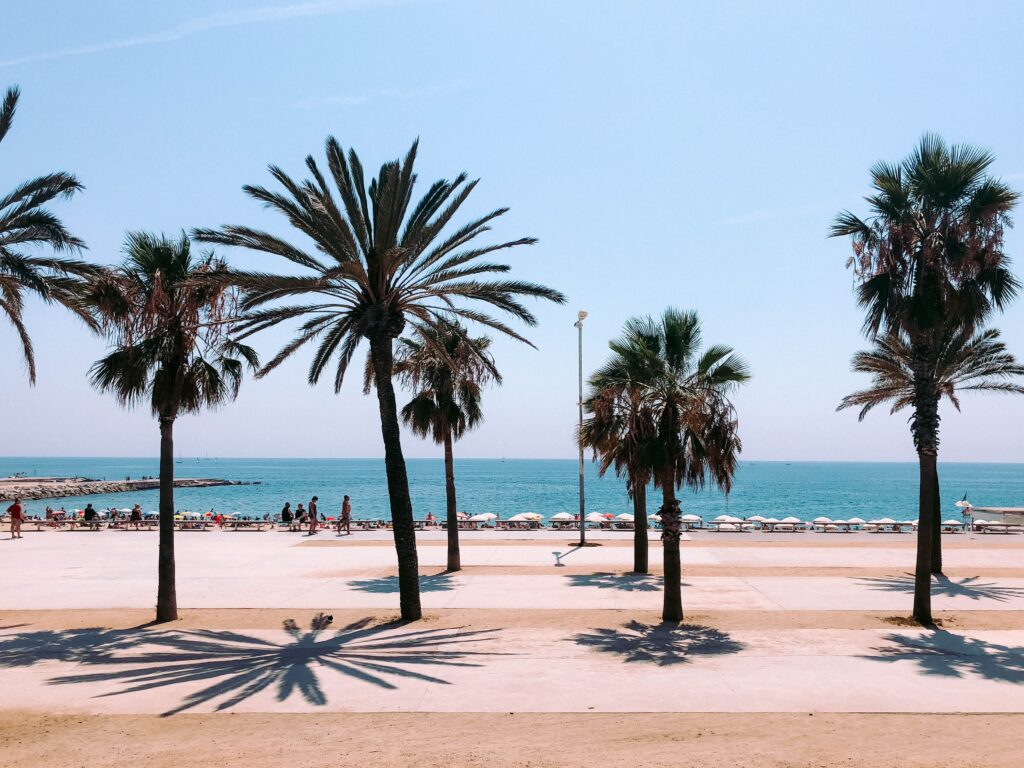
Gracia
Nestled in the heart of Barcelona, Gracia is vibrant and eclectic and unlike any other. From its lively streets to its charming squares, Gracia is a true reflection of the city’s unique character and spirit. Discover the winding streets and hidden plazas of Gracia, where locals come to relax and socialize. Here, you’ll find a mix of traditional and modern architecture, from historic buildings to cutting-edge design.
Take a stroll through the colourful streets and admire the street art and murals that adorn the buildings, showcasing the talents of local artists. For a taste of local life, visit one of the many cafes and bars that dot the neighbourhood. Sip a coffee or drink in hand, and soak up the lively atmosphere as you watch the world go by. Gracia is also a neighborhood of great food, where you’ll find everything from traditional Spanish cuisine to international flavours. Head to one of the many restaurants and sample the delicious local dishes, made with fresh ingredients and bursting with flavor.
Montjuïc
Montjuïc is a hilltop neighborhood with stunning views, rich history, and vibrant culture. Begin your visit at the Montjuïc Castle, a historic fortress that dates back to the 17th century and offers breath-taking views of the city and the sea. From here, explore the many museums and cultural institutions that call Montjuïc home, including the Joan Miro Foundation and the National Art Museum of Catalonia.
Take a stroll through the lush gardens and parks of Montjuïc, including the Jardins de Miramar and the Botanical Garden. Admire the stunning greenery, the colourful flowers, and the many sculptures and works of art that are spread throughout the neighborhood. For a taste of local life, visit one of the many cafes and restaurants in Montjuïc. Savour the local cuisine, from delicious tapas to fresh seafood, or simply relax with a drink in hand and take in the breath-taking views.
The TOP 10 must-see attractions in Barcelona
La Sagrada Família
The Basílica i Temple Expiatori de la Sagrada Família, commonly known as the Sagrada Familia, is a large Roman Catholic church and designed by the famous Catalan architect Antoni Gaudí. Construction of the church began in 1882 and continues to this day. The church is known for its striking architecture, which combines elements of Catalan modernism, Art Nouveau and Spanish Late Gothic. Gaudi worked on the church for over 40 years, until his death in 1926, but the work was not completed. The Sagrada Familia is considered a masterpiece of architecture and an iconic symbol of Barcelona and Catalonia.
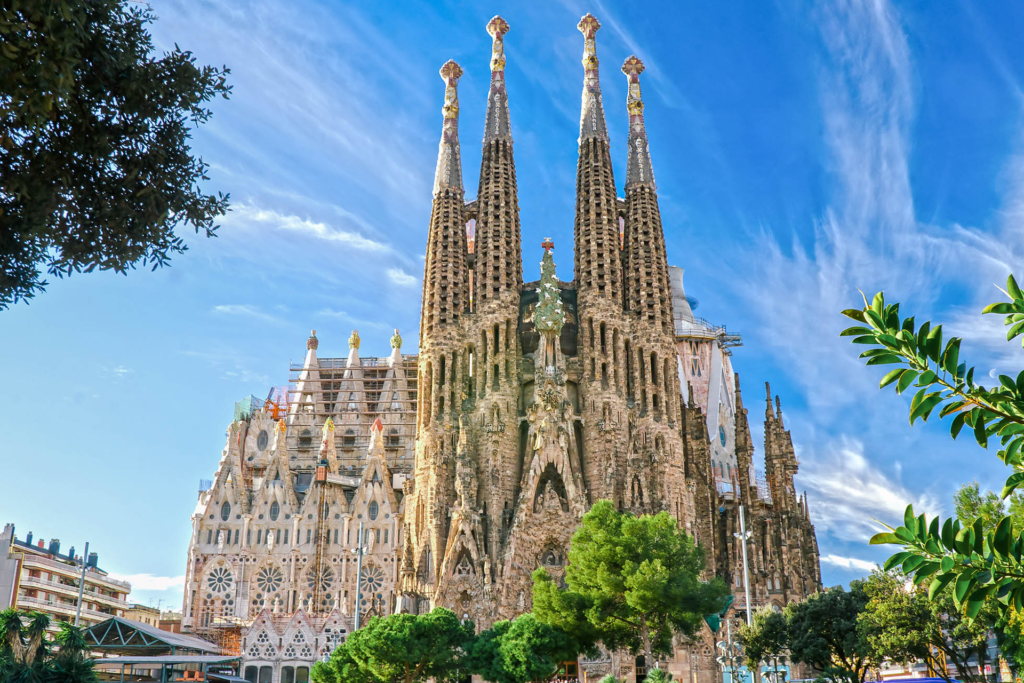
La Rambla
La Rambla runs from Plaça de Catalunya to the Christopher Columbus Monument at the city’s waterfront. It is the city’s most famous street and is lined with trees, street performers, and vendors selling souvenirs, flowers and street food. There are many street artists painting and drawing visitors It is a lively and colourful place to take a walk. You will find several notable buildings such as the Liceu Theater, The Gran Teatre del Liceu and La Boqueria market.

The Gothic Quarter
Also known as Barri Gòtic, is the historic centre of Barcelon andcharacterized by its narrow winding streets, medieval architecture, and historic landmarks. Some of the key sites within the Gothic Quarter include the Cathedral of Barcelona, the Picasso Museum, and the remains of the Roman walls. You can find many bars and restaurants to enjoy tapas and traditional Spanish food. It’s a great area for wandering and getting lost, taking in the sights, sounds, and history of Barcelona, and it’s one of the most charming neighbourhoods of the city.
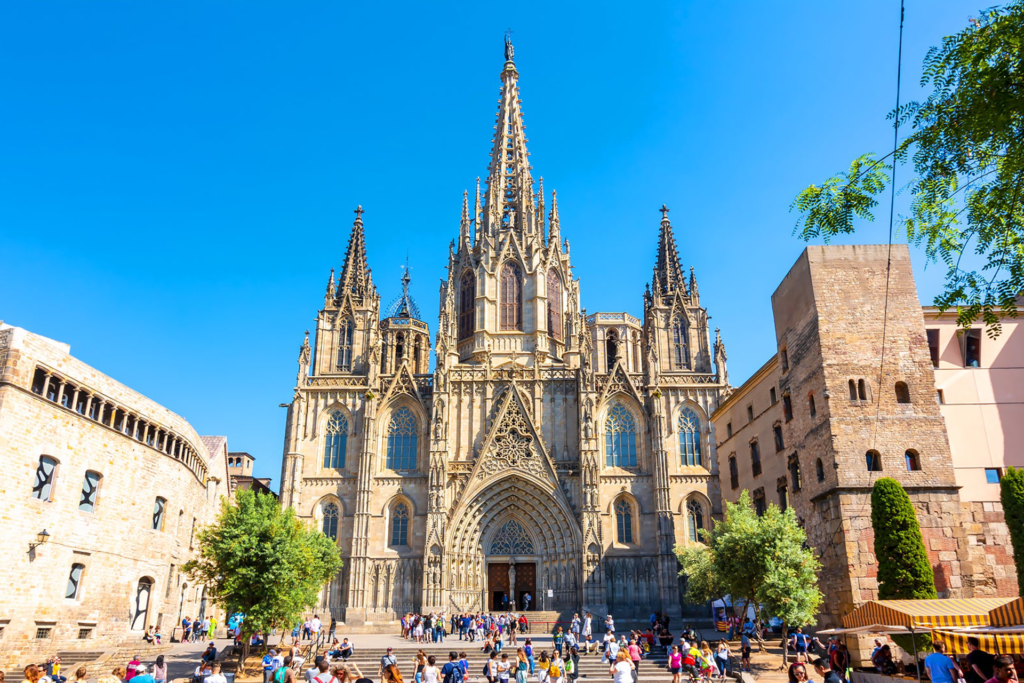
The Museu Picasso
Dedicated to the work of the famous artist Pablo Picasso and it houses the largest collection of his art in the world. The museum is located in the Gothic Quarter and is housed in five medieval palaces that have been renovated to create exhibition space. The museum’s collection includes more than 4,800 works by Picasso, including paintings, sculptures and drawings. It covers the full range of the artist’s career, from his early works in the 1890s to his later paintings in the 1970s. The museum is open to the public and is a popular tourist destination in Barcelona. It attracts over one million visitors each year.

The Fundació Joan Miró
This museum is dedicated to the works of the renowned Catalan artist, Joan Miró. The foundation was established in 1975 by the artist himself, and it houses an extensive collection of his works, including paintings, sculptures, prints, and drawings. The museum is located on Montjuïc, and the building itself was designed by the Catalan architect Josep Lluís Sert, who was a close friend of the artist. The collection at the foundation includes some of Miró’s most famous and iconic works, such as the “The Sun, the Moon and One Star” mural and “Personnage” sculpture.
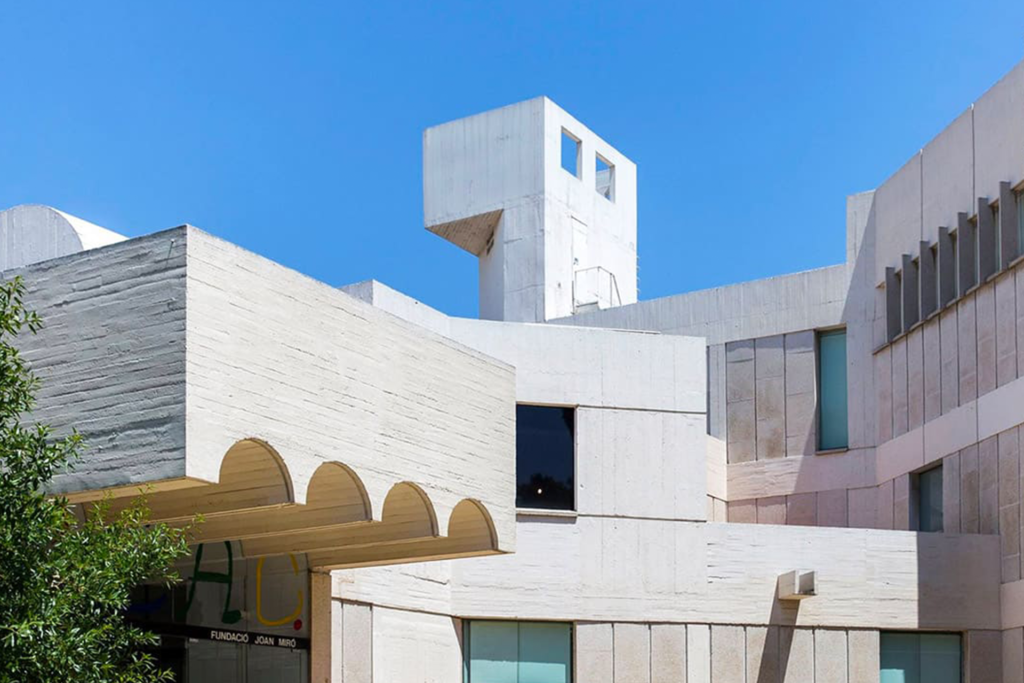
Parc Güell
Designed by Antoni Gaudí it has been a UNESCO World Heritage Site since 1984. The park is known for its unique and whimsical buildings, mosaics, sculptures, and landscaping. You can see some of Gaudi’s most famous works such as the dragon stairway, the Hypostyle Room, and the famous mosaic salamander. The park offers panoramic views over the city, particularly from the terrace, where you can see the skyline of the city and the sea. Parc Güell is one of the most visited places, so it can get quite crowded, especially during the high season, so it’s recommended to visit early in the morning or later in the afternoon.
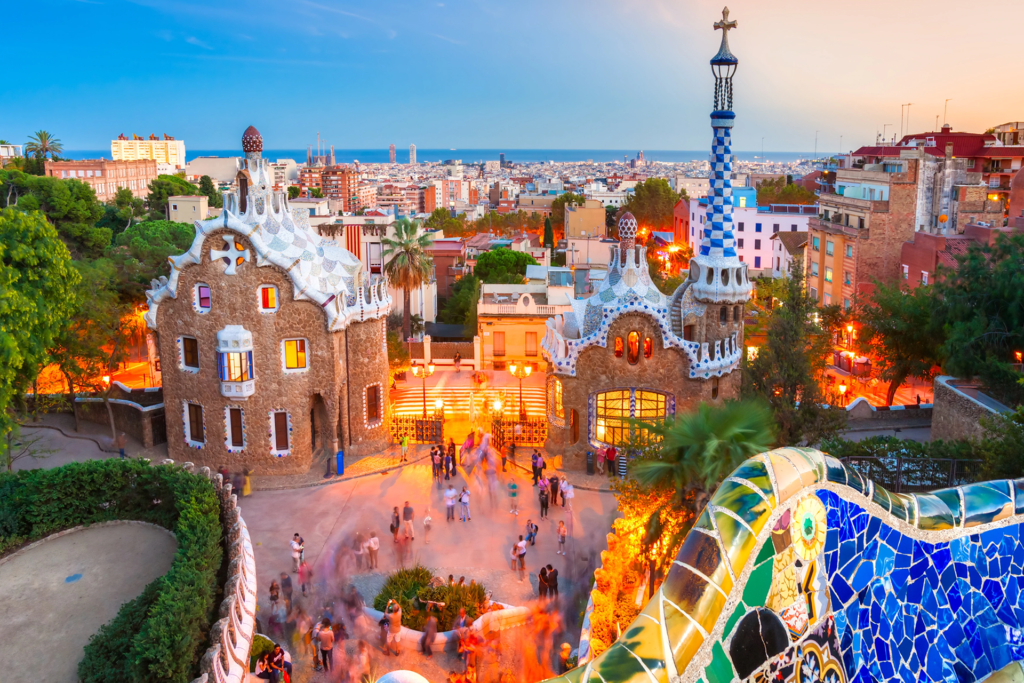
Camp Nou
Camp Nou is the home stadium of FC Barcelona, one of the most successful and popular football clubs in the world. With a seating capacity of 99,354, it is the largest stadium in Europe. The stadium is located in Les Corts and was built in 1957 and has undergone several renovations over the years. Camp Nou is a must-see destination for any football fan, and offers a tour of the stadium, including access to the dressing rooms, the players’ tunnel, and the press room. You can also visit the Museum, where you can discover the history of the club and some of the most emblematic trophies.

Museu Nacional d'Art de Catalunya
The National Art Museum of Catalonia is located in the Palau Nacional on Montjuïc hill. The museum houses a comprehensive collection of Catalan art, as well as works of art from other Spanish regions and Europe, dating from the 11th to the 20th centuries. The collection includes Romanesque frescoes, Gothic altarpieces, Renaissance and Baroque paintings, as well as modern and contemporary art. The museum also features a library and study centre for researchers. It is one of the most important art museums in Spain, and it is a must-see for any art lover visiting Barcelona.

CosmoCaixa
CosmoCaixa Barcelona is a science museum located in Sarrià-Sant Gervasi. The museum is known for its interactive exhibits, which aim to make science accessible and fun for visitors of all ages. The museum features a wide range of exhibits covering topics such as astronomy, geology, biology, and ecology. One of the highlights of the museum is the “Amazonian Rainforest” exhibit, which is a replica of a tropical rainforest complete with live animals, plants, and a waterfall. The museum also features a planetarium and a science park for children.

Casa Batlló
Casa Batlló was designed by the famous architect Antoni Gaudí and completed in 1907. The façade of the building is adorned with colourful mosaics, and the rooftop is shaped like the back of a dragon, with a curved and undulating design. The interior of the building features curved walls and ceilings, and is filled with natural light. You can take guided tours, which provide an in-depth look at the architectural style and design of Gaudi. The building is part of the UNESCO world heritage site “Works of Antoni Gaudí”.
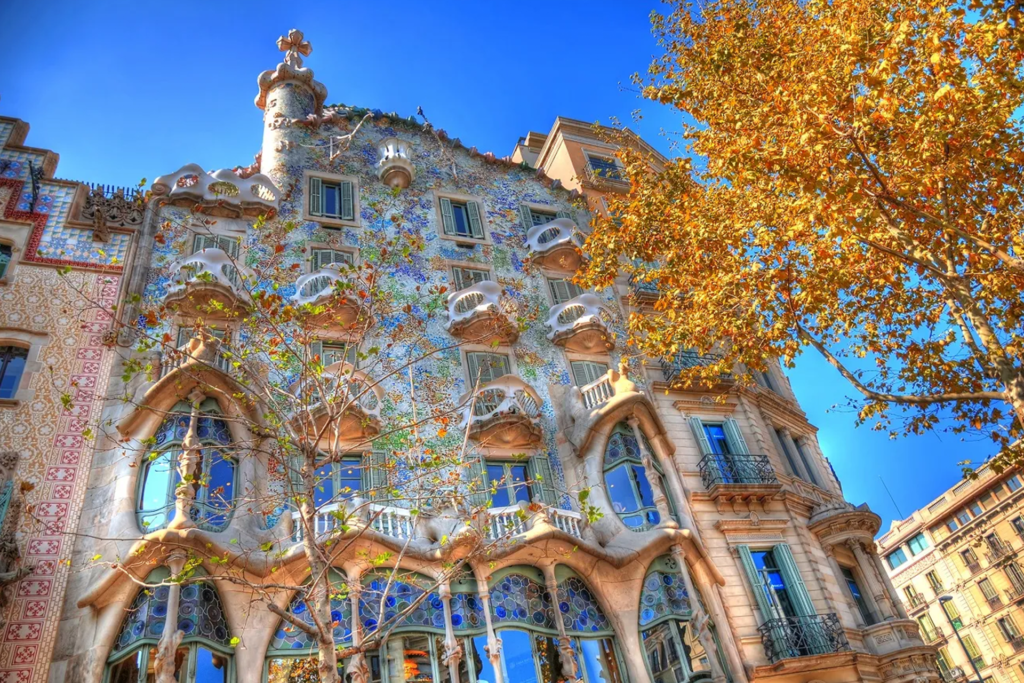
The best city break activities barcelona
Shopping Barcelona
Barcelona has a wide range of shopping options, from large department stores and shopping malls to smaller, independent shops and markets. Popular places for shopping are La Rambla, the neighbourhoods of El Raval and Gracia and the Passeig de Gràcia which is known for its high-end shops, designer boutiques, and luxury brands. There are also several large shopping centres such as Maremagnum, located on the waterfront in the Barceloneta neighbourhood and Diagonal Mar. This is a large shopping mall that is located in the Sant Martí neighbourhood and is home to a wide range of shops, restaurants, and entertainment options.

2 Fun activities for Children

The Barcelona Zoo
The Zoo is located in the Parc de la Ciutadella. It opened in 1892 and is one of the oldest zoos in Europe. It is home to over 7,000 animals representing over 400 species from around the world. The zoo is known for its wide variety of animals, and its efforts in conservation and breeding of endangered species. It is divided into different areas, each one representing a different biosphere. You can explore the African Savannah, the Arctic, the Amazon, the Asian Forests and the Mediterranean among other regions. The zoo also has a wide variety of birds, reptiles, fish, amphibians and invertebrates. Some of the highlights include the Gorillas, Chimpanzees, Elephants, Giraffes, Tigers and Polar bears.

The Barcelona Aquarium
One of the largest aquariums in Europe, it is located in Port Vell and home to over 11,000 animals from over 450 different species. Some of the highlights of the aquarium include a shark tunnel, a Mediterranean coral reef exhibit, and a tropical rainforest exhibit. The aquarium also features interactive exhibits, such as a touch pool where you can feel different sea creatures, and a 4D cinema where visitors can experience the sensation of diving. The Mediterranean area features animals and plants found in the Mediterranean Sea, including sharks, rays, and sea turtles. The Tropical area has a wide variety of fish, amphibians and reptiles from the tropical regions of the world, including the Amazon rainforest, the Indo-Pacific coral reef and the African savannah.
FC Barcelona: mes que un club
FC Barcelona was founded in 1899 and is one of the most successful and popular football clubs in the world. Barcelona plays in the top tier of Spanish football and is known for its attacking, possession-based style of play and has featured many world-class players over the years, including Lionel Messi, Xavi, Andrés Iniesta, and Ronaldinho. Barcelona’s home stadium is the Camp Nou, which is the largest stadium in Spain and has a capacity of 99,354. The club has a passionate and loyal fan base, known as the “Culés,” and is known for its rivalry with Real Madrid.
To purchase tickets for FC Barcelona, you can visit their official website and navigate to the “Tickets” section. Here, you can browse through available matches and select the desired game to purchase tickets. You can also purchase tickets at the Camp Nou stadium ticket office or through authorized resellers. It’s always best to buy them from the official website or the box office to avoid scams.
Espanyol: the other club from Barcelona
RCD Espanyol de Barcelona, also known as Espanyol was founded in 1900 and plays in La Liga, the top tier of Spanish football. The club has a passionate and loyal fan base and is known for its rivalry with FC Barcelona. Espanyol’s home stadium is the RCDE Stadium, which is located in the Cornellà de Llobregat and has a capacity of 40,000.
Aire de Barcelona
Aire de Barcelona is a spa that specializes in ancient Roman-style baths and offers a range of spa treatments and services. The spa is located in the heart of Barcelona, in a historic building that dates back to the 14th century. The spa is divided into several different areas, each with its own unique atmosphere and set of services. One of the main attractions is its Roman baths, which are modelled after ancient Roman baths and feature a series of pools filled with warm, mineral-rich water. The spa also has a steam room and a sauna, as well as a relaxation area where you can rest and unwind. The Aire de Barcelona is definitely a luxurious and relaxing spa experience.
La Boqueria
La Boqueria is a market in Ciutat Vella and famous for its wide variety of fresh produce, meats, seafood, and other food items. The market dates back to the 13th century and has grown over the centuries to become one of the largest and most diverse markets in Europe. The meat and fish sections are very popular, with vendors selling everything from freshly caught seafood to cured hams and sausages. There are also sections for fruits and vegetables, cheeses, baked goods, and even flowers. One of the most popular features of La Boqueria is its numerous tapas bars and cafes. These serve a variety of traditional Spanish dishes and drinks, such as paella, tortilla, and sangria. La Boqueria market is open all days of the week. If you want to avoid the crowds, it’s best to go early in the morning or later in the evening.
Most Romantic Spot
Bunkers del Carmel is a viewpoint located at the top of Turó de la Rovira, one of the highest hills in the city. It offers a panoramic view of the city, the Mediterranean sea, and the mountains. It’s an off the beaten path spot, and a great place to catch the sunset. The best time to go is around sunset, when the sky is painted in warm colours and the view of the city is breath taking. It’s a romantic spot for couples who want to get away from the crowds and enjoy the beauty of the city in a secluded and peaceful place.
Best Kept Secret
One of the best kept secrets of Barcelona is the Parc del Laberint d’Horta. This park is located in the Horta-Guinardó neighborhood, on the north-west side of the city. It is one of the oldest parks in Barcelona and it offers a peaceful retreat from the busy city centre. It features a beautiful garden, a maze, a pond, a waterfall and several sculptures, but the highlight of the park is the neoclassical palace, which is now a museum and it hosts temporary exhibitions. The park is a great place to take a stroll, have a picnic or simply relax while enjoying the beauty of the park.
barcelona Food & Drink Scene
Barcelona is renowned for its diverse and delicious cuisine, which combines elements of traditional Catalan cooking with Mediterranean influences. Some of the city’s most famous culinary specialties include paella, a rice dish made with seafood or chicken, and tapas, small plates of appetizers that can be enjoyed at bars and restaurants throughout the city. There are many traditional dishes like Escalivada (roasted vegetables), Fideuà (a paella made with noodles), and Botifarra (Catalan sausage).
Barcelona is home to many excellent restaurants, including some with Michelin stars. You can also find a wide variety of international cuisine like Japanese, Chinese, Indian, Italian, Greek and more in the city. Barcelona is famous for its wine, it’s region of Catalonia is one of the main wine producing regions in Spain and has many different varieties, for example Cava which is a sparkling wine made in the same method as Champagne, but from local grapes.
Tapas
Tapas are small plates of food that are popular in Barcelona and throughout Spain. They are traditionally served at bars, and can be enjoyed as a snack or as a full meal. “Tapas” or “pinchos” are typically served alongside a drink, usually wine or beer. Some of the most popular tapas include patatas bravas, which are fried potatoes served with a spicy tomato sauce, croquetas, small fried balls filled with meat, fish or vegetables, and tortilla española, a traditional Spanish omelette made with potatoes and onions. Many bars in the city will offer a variety of tapas dishes and you can find a good variety of traditional and creative tapas. Some bars offer tapas to try as a complimentary snack while others would serve them as a separate dish.

Cava
Cava is a type of sparkling wine that is produced in the Catalonia region of Spain. It is made using the same method as Champagne, known as the “Methode Champenoise,” which involves secondary fermentation of the wine in the bottle. This process gives the wine its bubbles and rich, complex flavour. Cava is made primarily from three grape varieties: Macabeo, Xarel·lo, and Parellada. Cava comes in three different styles: brut nature, brut, and semi-sec. Brut nature is the driest style, with no added sugar, brut is the most common and is slightly sweeter than the brut nature, and semi-sec is the sweetest of the three, with a small amount of added sugar. Cava is often paired with light foods, such as seafood, sushi, or chicken, and also served as a pre-dinner drink. It’s also a great pairing for appetizers, light desserts, and foie gras. The acidity and bubbles of cava make it a perfect match for rich and creamy dishes.
Abac
Abac is a 3 star Michelin-starred restaurant located in the Eixample. It is famous for its contemporary Mediterranean cuisine that combines traditional Spanish flavours with modern culinary techniques. The restaurant is led by Chef Jordi Cruz who has trained under some of the top chefs in the world such as Ferran Adria and Rene Redzepi. He creates contemporary dishes with a Mediterranean touch, using only the finest and freshest ingredients. Abac offers a variety of dining options, including a tasting menu, a la carte menu and also an exclusive chef’s table that accommodate up to 8 guests. The restaurant has an elegant and modern interior design, with a minimalist and contemporary decor. Abac has been consistently awarded with Michelin stars since 2011 and is listed in the World’s 50 Best Restaurants.
Eclipse
The W Barcelona, also known as Hotel Vela, is a luxury hotel located on the beachfront of Barceloneta. It is known for its distinctive sail-shaped architecture and its rooftop bar, Eclipse. Eclipse is the hotel’s rooftop bar and lounge that offers panoramic views of the city and the Mediterranean Sea. It is on the 26th floor of the hotel, and is the highest rooftop bar in Barcelona. The terrace provides a great space to enjoy the sunset over the city, It’s a perfect spot for a romantic dinner, a special occasion or simply for having a drink while enjoying the views. The rooftop bar is open year-round, and it is often busy and crowded. If you want to guarantee a spot, it’s recommended to make a reservation in advance.
Top Nightlife Spots barcelona
Barcelona is known for its lively nightlife, with a wide variety of options to choose from. One popular club is Razzmatazz, which offers five different rooms with different music genres like pop, rock, and techno. Another well-known club is Pacha, which is one of the most famous clubs in the city and offers a variety of music and a VIP area. For those looking for a more upscale experience, Opium is a great option. This trendy venue offers a lounge, restaurant, and club all in one. Boadas is a historic cocktail bar that has been around since 1933 and is a must-visit for cocktail enthusiasts.
Carpe Diem is an exclusive beach club and lounge that offers a luxurious setting and a lively atmosphere. The George Payne is a traditional Irish pub located in the heart of the city and is perfect for a casual night out with friends. The nightlife scene in Barcelona is diverse and offers something for everyone, from casual pubs to exclusive clubs.
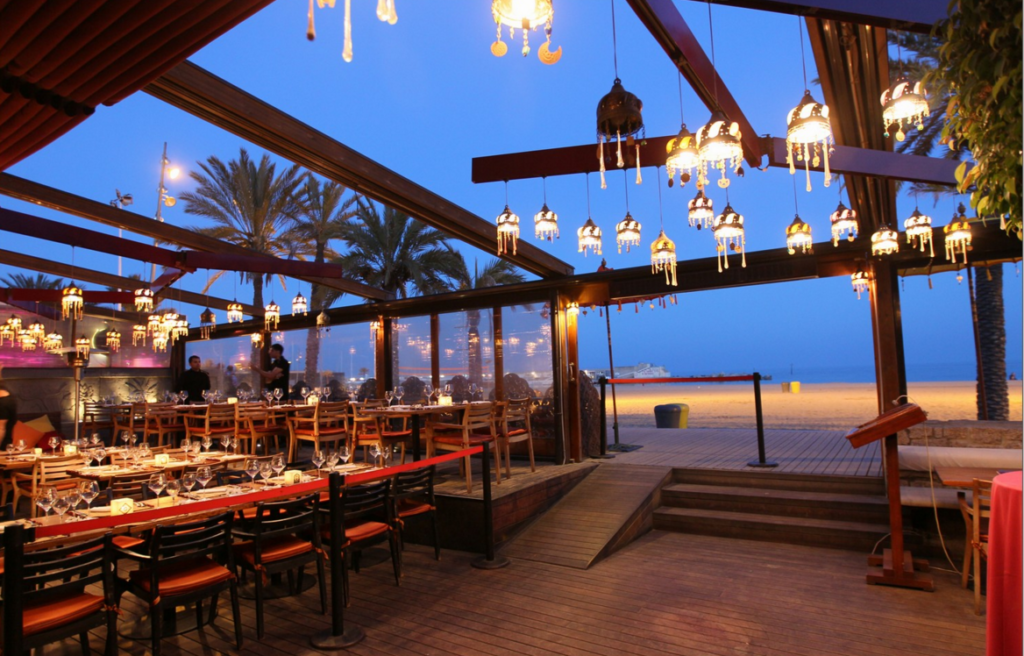
Theatre Nacional de Catalunya
This is the main public theatre in Catalonia and serves as a performing arts venue for theatre, dance, and opera. The theatre was opened in 1997 and is located in the Montjuic Castle, in a building designed by the architect Ricardo Bofill, it features 3 different stages, with the largest one having capacity of nearly 1,500 people. The TNC has a strong focus on promoting contemporary Catalan culture and language through its productions, but it also host international productions and events as well.
Palau Sant Jordi
The stadium was built for the 1992 Summer Olympics and was designed by the Japanese architect Arata Isozaki. It has a capacity of around 17,000 people for concerts and up to 24,000 for sporting events and It’s one of the most important venues for concerts, exhibitions and other cultural events in Barcelona and Catalonia. It is known for its distinctive curved roof, which is made of steel and glass and has become an iconic symbol of the 1992 Olympics. The venue also hosted some of the most famous artist in the music industry such as Beyoncé, Bruce Springsteen, Madonna, and many more.
Razzmatazz
Razzmatazz is one of the city’s premier nightlife destinations and known for its diverse musical offerings and state-of-the-art sound and lighting systems. The venue is divided into five different spaces, each with its own unique atmosphere and music style. Razzmatazz also features a large outdoor terrace that is open during the summer months, providing a great spot to take a break from dancing and enjoy the fresh air. The club is open from Thursday to Saturday from midnight to 6 am, and attracts a young and diverse crowd. It’s a must-visit spot for music lovers and party-goers looking for an unforgettable nightlife experience in Barcelona.
The Gracia Festival
This annual street festival is typically held in the last week of August and is one of the most popular and colourful festivals in the city. During the festival, the streets of Gracia are decorated with elaborate themes and colourful decorations, turning the entire neighbourhood into a giant open-air exhibition. Each street is decorated by a different group of neighbours and compete with each other for the title of best-decorated street. The decorations are created with recycled materials and are often very creative and imaginative.
The festival is a community event that is organized by the residents of Gracia, with the help of local businesses and organizations. It is a celebration of the neighbourhood’s artistic and cultural heritage, as well as its sense of community. In addition to the street decorations, the festival features a variety of events and activities such as live music, dance performances, and parades. The streets are filled with locals and visitors, enjoying the festive atmosphere and sampling the delicious food and drinks.

Getting around the city
Barcelona - El Prat Airport
Barcelona – El Prat Airport is the main airport serving the city of Barcelona and the surrounding region. It is located about 12 kilometres southwest of the city centre. The airport has two terminals, Terminal 1 and Terminal 2, which are connected by a shuttle bus service. Terminal 1 is used by most major airlines, while Terminal 2 is used by low-cost carriers and some other airlines.
In addition to the main airport, Barcelona also has a small regional airport, Barcelona – Girona Airport, which is located about 100 kilometres northeast of the city. This airport is mainly used by low-cost carriers and serves a number of destinations within Europe.
Public transport
Barcelona has an efficient and comprehensive public transportation system that consists of buses, metros, trams, and trains. The city’s public transportation system is operated by a company called Transports Metropolitans de Barcelona (TMB), which manages a wide range of services and options for getting around the city. The Barcelona metro is a network of underground trains that serve the city and the surrounding region. It consists of nine lines that cover most of the city, with a total of 173 stations. Barcelona also has an extensive network of buses that serve the city and the surrounding region. There are over 120 bus lines that operate in the city, with a total of over 4,000 stops. Buses are a convenient way to get around the city, especially to areas that are not served by the metro.
Barcelona has a number of trams that serve the city and the surrounding region. The tram network consists of four lines that cover a total of 37 kilometres and serve over 60 stops. Trams are a convenient way to get around the city and are especially useful for getting to and from the beach. Ferrocarrils de la Generalitat de Catalunya (FGC) is a network of suburban trains that serve the city and the surrounding region. The FGC network consists of eight lines that cover a total of 284 kilometres and serve over 100 stations. FGC trains are a convenient way to get to and from the city centre and the suburbs.
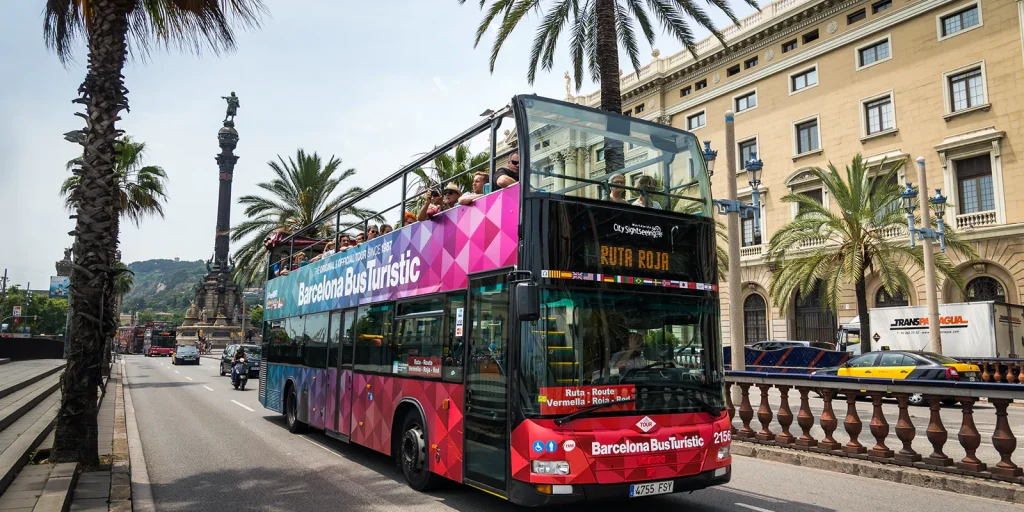
Biking in Barcelona
Barcelona is a great city for biking, with many options for renting a bike and plenty of bike lanes and paths to make it safe to ride around. There are several bike rental companies in Barcelona that offer a variety of options for renting a bike. Some popular options include Bicing, which is a city-run bike-sharing program, and there are also a number of independent bike rental shops throughout the city. There are also many electric bike and scooter options that can be rented through apps. Barcelona has a well-developed network of bike lanes and paths, making it relatively safe to bike around the city. The city has over 400 kilometres of bike lanes, many of which are separated from traffic, providing a safe and comfortable ride for cyclists.
Many of the city’s streets have bike lanes, and there are also dedicated bike paths in parks and along the beach. Always wear a helmet and be aware of the traffic around you. Biking in Barcelona is a great way to explore the city, with plenty of options for renting a bike and a well-developed network of bike lanes and paths. With a little bit of caution and awareness, biking in Barcelona can be a safe and enjoyable experience.
Prepare for your city break to barcelona
Movies Featuring Barcelona
One of the most famous movies shot in Barcelona is “Vicky Cristina Barcelona” directed by Woody Allen and released in 2008. The movie stars Scarlett Johansson, Penélope Cruz and Javier Bardem. The film tells the story of two American women, Vicky and Cristina, who spend a summer in Barcelona, where they meet an artist named Juan Antonio, played by Javier Bardem. The movie showcases the beauty and culture of Barcelona, with many scenes filmed at iconic locations throughout the city such as Gaudí’s Park Güell, the Gothic Quarter and the beach.
The movie was a commercial and critical success, grossing over $96 million worldwide, and won an Academy Award for Penelope Cruz for Best Supporting Actress. The film also received positive reviews for its portrayal of the city, which was seen as a character in its own right. “Vicky Cristina Barcelona” is a romantic comedy-drama film that highlights the city’s architecture, art and culture, and shows the city as a magical and charming place. The film helped to put Barcelona on the map as a must-see destination for movie lovers and tourists.
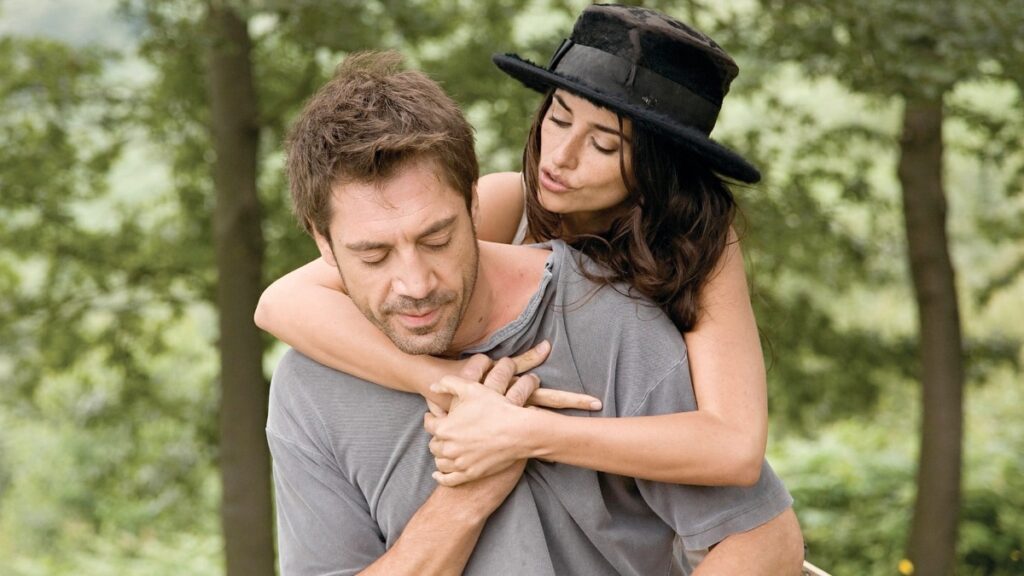
Best Travel book
Highly recommended is “Barcelona: The Great Enchantress” by Robert Hughes. This book is probably the definitive guide to the city, offering a comprehensive history of Barcelona and its culture. Hughes, an Australian art critic and writer, lived in Barcelona for over a year, and his book is a mix of historical and personal anecdotes, essays and commentary on the city’s art and architecture, and its people. He presents an in-depth look at the city’s history, art, and architecture, from the Roman period to the present day.
The book covers the city’s most famous landmarks, such as the Sagrada Familia and Park Güell, as well as lesser-known gems, and provides an understanding of the city’s unique culture and history. Hughes also delves into the political and social issues that have shaped the city, making it an insightful and informative read for anyone interested in understanding Barcelona’s past and present. The book is not just a guidebook with information about the city, but it is also a fascinating read that will give you an idea of the spirit of the city.
Time and Money
The currency in Barcelona, Spain is the Euro (EUR). The Euro is the official currency of the European Union. As for the time, Spain is in the Central European Time (CET) time zone, which is one hour ahead of Coordinated Universal Time (UTC+1). During the summer months, Spain observes Daylight Saving Time and the time is shifted forward by one hour to Central European Summer Time (CEST) (UTC+2).

The History of Barcelona
Barcelona is a city with a rich and varied history that spans over 2,000 years. It was founded by the Romans in the 1st century BC and became an important trading and cultural centre in the Mediterranean region. In the Middle Ages, Barcelona was a major centre of Catalan culture and played a significant role in the development of the Catalan language and identity. In the late 19th and early 20th centuries,
Barcelona underwent significant industrialization and modernisation, which transformed the city into a major economic and cultural hub. During the 20th century, Barcelona also played a key role in the Catalan independence movement and has been a centre of political and cultural activism. In recent years, the city has become a popular destination for tourists, who are drawn to its vibrant culture, beautiful architecture, and lively atmosphere.
where is Barcelona?
>> Interested in Madrid or Seville? Take a look at our Madrid blog or Seville blog <<
